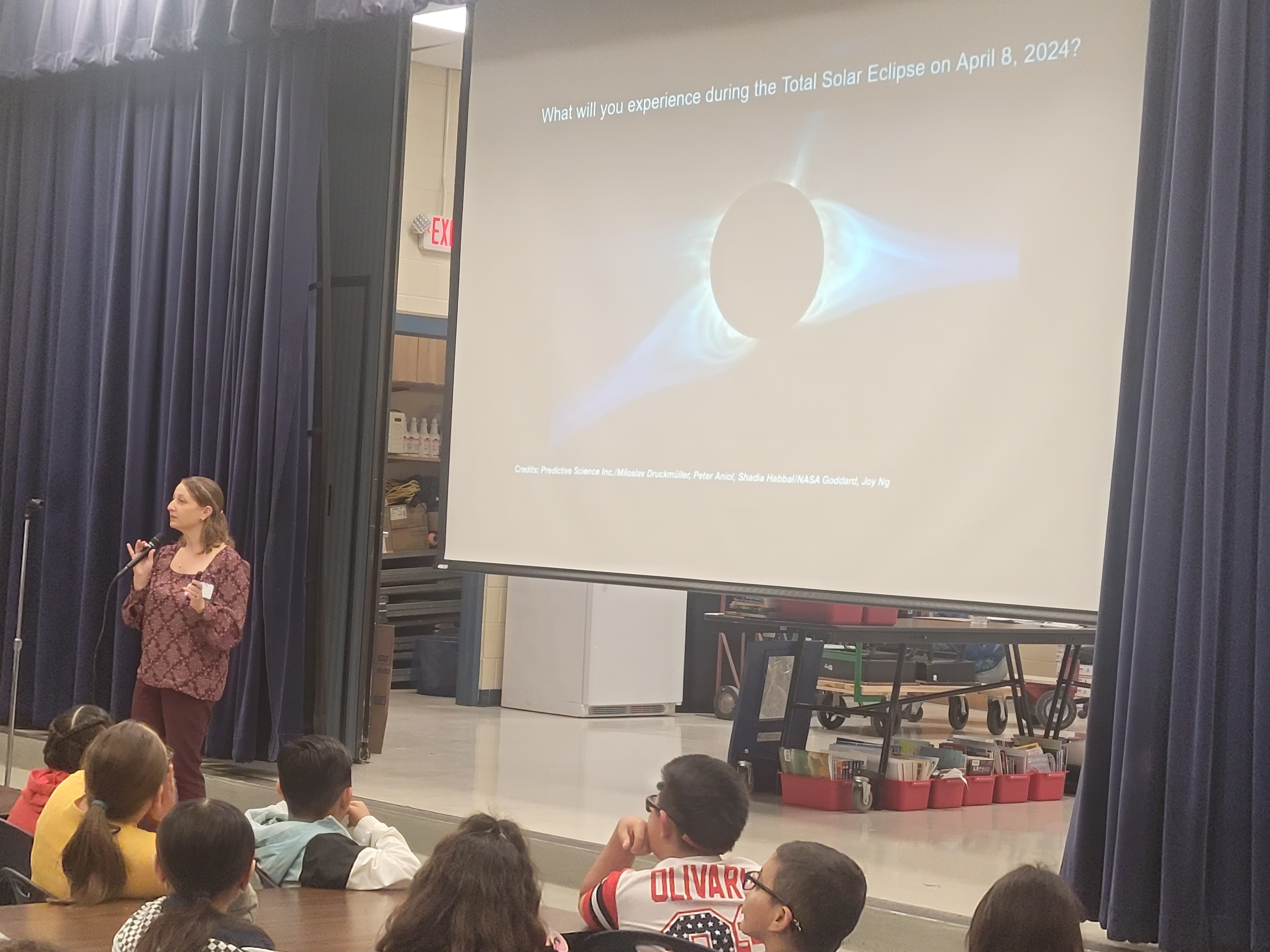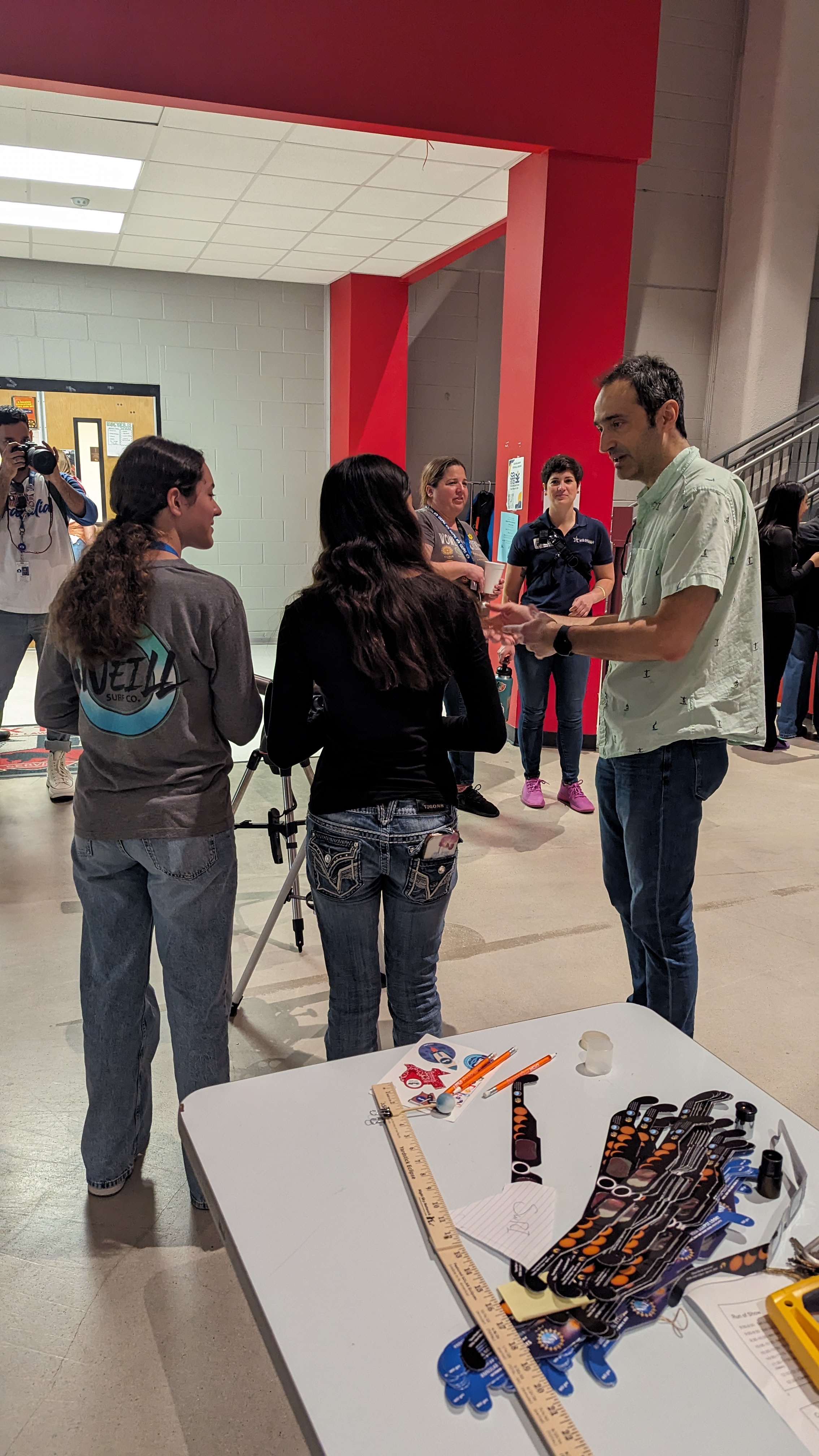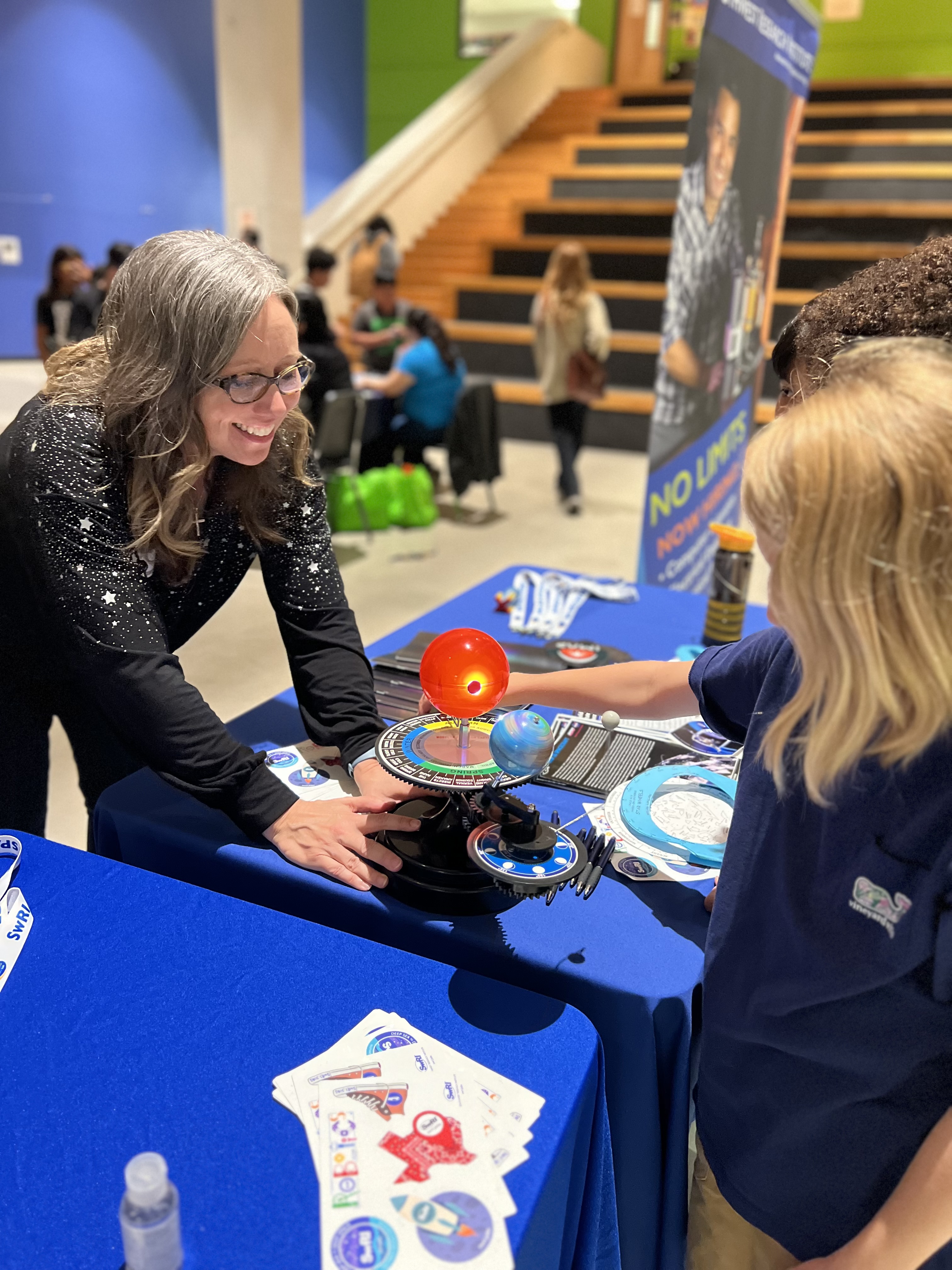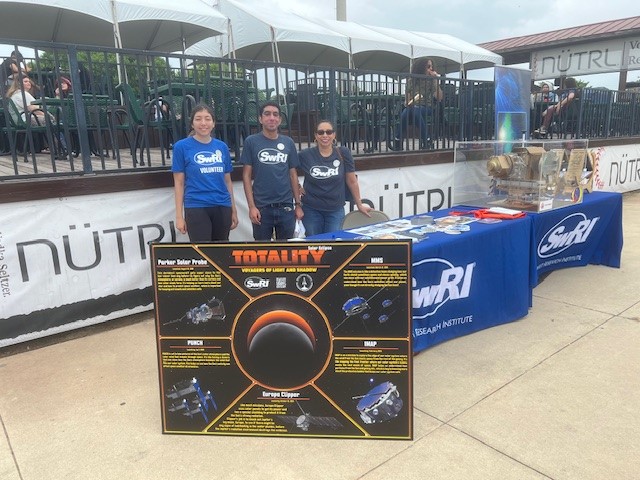Background

Figure 1. Dr. Tracy Becker (D15) presents information about the upcoming Solar Eclipse at Colby Glass Elementary School.
San Antonio was at the intersection of the annular solar eclipse on October 14th, 2023, and the total solar eclipse on April 8, 2024, providing an exceedingly unique opportunity to directly connect these celestial events with STEM (science, technology, engineering, and mathematics) careers and education.
This presidential discretion internal research project contains elements of all four areas that constitute independent research and development through 1) increasing public knowledge in science by stimulating interest and curiosity in scientific phenomena as an introduction to basic research; 2) providing the public with the underlying science and mathematics needed to understand how eclipses occur and what we can learn from observing them and other astronomical objects and events; 3) including elements of engineering intended to exploit the potential for observing solar eclipses using telescopes and optical devices with the appropriate solar filters that support the potential scientific discoveries that may arise through dedicated studies of the Sun, its corona, the solar wind, and the solar wind’s interaction with the Earth’s magnetic field; and 4) allowing SwRI and the public to evaluate scientific instruments and equipment and learn how to use them to advance scientific knowledge, educate future scientists and engineers on the systematic application of scientific knowledge and engineering design.
Approach

Figure 2. Dr. Cesare Grava (D15) talks about eclipses and telescopes with students at a STEM event at the San Antonio Independent School District (SAISD) Advanced Learning Academy.
To achieve the goals of this program, we capitalized on the expertise of the scientists and engineers who work at the Institute. This includes using their knowledge for the development of materials such as short videos that provide the scientific and mathematical background needed to explain the eclipses, the development of a website with reference and safety information about the eclipses, and the development of presentation materials for SwRI STEM experts to go into the public and into schools to promote awareness about these celestial events and provide the necessary science context for the eclipses, solar system dynamics in general, and information about being a professional in a STEM field. The program also leveraged materials and outreach efforts that have been funded by NASA through the PUNCH mission and the citizen science program CATE 2024 funded by NASA National Science Foundation.
Accomplishments

Figure 3. Amy Burgin explains how solar eclipses occur with students at a STEM event at SAISD’s Advanced Learning Academy, where students also participated in a conversation with astronauts on the International Space Station.
STEM events preceding both the annular eclipse in October 2023 and the total solar eclipse in 2024 were extremely effective and well-attended by people of all ages. SwRI directly collaborated with the San Antonio Library System, the San Antonio College’s Scobee Education Center, the Witte Museum, the DOseum, UTSA, San Antonio Parks and Recreation, SeaWorld, and others. Leading up to the annular eclipse, we developed a strong partnership with the San Antonio Independent School District (SAISD), we worked with administrators and teachers to extend the reach of knowledge and inspiration for basic research into the classrooms over the course of the school year. This included recording four videos explaining the celestial mechanics of eclipses and describing lunar and solar science and presenting the keynote on incorporating the eclipse into the classroom during a teacher professional development workshop. By partnering with Workforce Solutions Alamo, which is invested in developing technical skills for students across 13 counties in the San Antonio area, these same efforts were extended into more rural communities. During the annular solar eclipse, SwRI staff supported an event at the Scobee Education Center that hosted up to 3,000 people. SwRI staff also talked with hundreds of children at eclipse viewing events at ten SAISD schools.

Figure 4. Umer Salman (D15), Valerie Avila (D15) and another staff member sharing information about SwRI in space at the Wolff Stadium during the total eclipse on April 8, 2024.
This effort also supported existing SwRI eclipse-related programs including the NSF-funded Citizen CATE project. Leading up to the total solar eclipse in April, SwRI scientists led eclipse volunteer training events for community members and gave talks at libraries and schools, including an event where students spoke with astronauts on the International Space Station. STEM experts provided information for local newspaper articles. On the day of the eclipse, despite the clouds, SwRI scientists supported large-scale eclipse viewing events at universities, wineries, Wollf Stadium, SeaWorld, and more. There was also a viewing event at SwRI’s campus.
Through this effort, 30,000 solar viewing glasses were distributed to SwRI employees and the public. 25,000 pinhole projectors, including 5,000 in Spanish, which were designed by and featured the logo of the SwRI-led PUNCH mission, were also distributed. SwRI subject matter experts attended over 45 events leading up to and during the eclipse, with direct and indirect impacts to tens of thousands of people in the greater San Antonio area.

